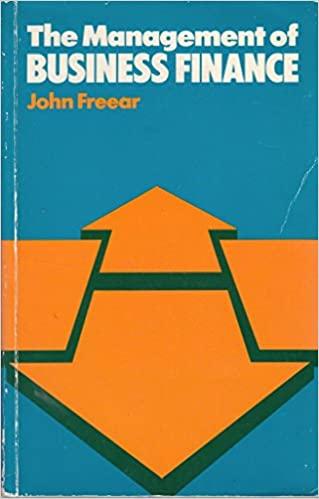




Consider the following Table of information and use it, where required, to answer parts (a)-(e) of this question: W p 5-year sample u PM Expects Table 2: Annual return forecasts Benchmark Index Component Mines 0.20 Oil 0.30 Machine 0.30 Utility 0.10 Other 0.10 0.21 0.10 0.10 0.06 0.05 Equilibrium expected return 0.10 0.12 0.15 0.08 0.06 0.05 -0.08 Notes: The industry portfolios (Mines, Oil, ...) in Table 1 are components of a benchmark index wherein each component is weighted by wy. The sample mean return is ji, and 'Equilibrium expected return' refers to the market's expectation of return based on the Black-Litterman approach. 'PM Expects' are the return forecasts from the portfolio manager. A missing value indicates that the manager does not have a specific return forecast, or has an expectation equal to that of the market. a) What are the advantages of the Black-Litterman model over the Markowitz model? (5 marks) b) Briefly explain the rationale of the Black-Litterman approach? (4 marks) Hint: Commence with the basic starting assumptions. c) Are the views provided in Table 2 absolute view or relative view? Provide an example of the other type of views not provided in Table 2.(2 marks) d) In this model, how do you express the confidence of the manager in his/her view? What value of the expected return of Oil should the portfolio manager use in identifying the optimal portfolio if he/she has 100% confidence in his/her views? (2 marks) e) Based on the information provided in Table 2, explain what the portfolio manager needs to do to arrive at the weights of the optimal portfolio? There is no need to do any calculation, but be as precise as you can and include in your answer a statement of any additional information required. (3 marks) Consider the following Table of information and use it, where required, to answer parts (a)-(e) of this question: W p 5-year sample u PM Expects Table 2: Annual return forecasts Benchmark Index Component Mines 0.20 Oil 0.30 Machine 0.30 Utility 0.10 Other 0.10 0.21 0.10 0.10 0.06 0.05 Equilibrium expected return 0.10 0.12 0.15 0.08 0.06 0.05 -0.08 Notes: The industry portfolios (Mines, Oil, ...) in Table 1 are components of a benchmark index wherein each component is weighted by wy. The sample mean return is ji, and 'Equilibrium expected return' refers to the market's expectation of return based on the Black-Litterman approach. 'PM Expects' are the return forecasts from the portfolio manager. A missing value indicates that the manager does not have a specific return forecast, or has an expectation equal to that of the market. a) What are the advantages of the Black-Litterman model over the Markowitz model? (5 marks) b) Briefly explain the rationale of the Black-Litterman approach? (4 marks) Hint: Commence with the basic starting assumptions. c) Are the views provided in Table 2 absolute view or relative view? Provide an example of the other type of views not provided in Table 2.(2 marks) d) In this model, how do you express the confidence of the manager in his/her view? What value of the expected return of Oil should the portfolio manager use in identifying the optimal portfolio if he/she has 100% confidence in his/her views? (2 marks) e) Based on the information provided in Table 2, explain what the portfolio manager needs to do to arrive at the weights of the optimal portfolio? There is no need to do any calculation, but be as precise as you can and include in your answer a statement of any additional information required











